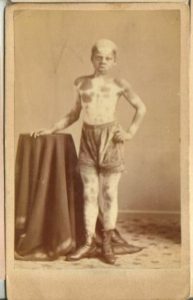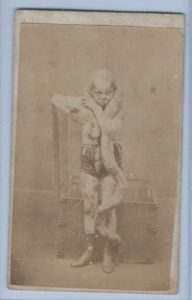Emma looked around the room. Here she was fifty years after she had married Frederick in 1879 and he was still here with her, standing by her side.
It had been a cold, sunny, winter’s day when she had walked down the aisle looking towards Frederick and her new life. Emma had walked arm in arm with her father, Edward Atkins. Her father had already given away more than one daughter and had seemed quite an old man to Emma. She had looked at him, fleetingly, as he clasped her arm. But in reality, her focus was almost entirely on the young man waiting for her down the other end of the church nave.
Two Brides Maids had preceded her down the aisle, their long dresses swaying gently as they walked, their skirts looped back into bustles, much like her own. The church was dark inside with the pews on either side a shadow of darker wood that helped to make all of Emma’s family and friends blur into the dimness of the interior. It didn’t matter much anyway, she had had eyes for no one except Frederick, in his stylish frock coat and waistcoat, as she walked closer towards him.
In a daze, she had responded to the ceremony, and then they had been out of the church and off to the reception in the beautiful coaches that had been built by Frederick, with their detailed gold filigree work on the doors. Looking back now the gathering had seemed to be one long round of congratulations, and she had time to consume very little food or drink. She had felt dizzy with the excitement of it all. She had wondered, at the time, what would it be like being Mrs Lockwood?
Fifty years later and now she was one of the older ones, the matriarch of a large family. Around her, dressed in their finest, were her children, grandchildren and great grandchildren. Instead of wearing white, for a wedding, she wore a black, gold satin with a gold and black embroidered coat with fur trimming. Gone were the bustles of the 1870’s and the top hats and long coats that the men wore. When she had married her white dress symbolised virginity and purity, now her black and gold dress represented the fifty years that Frederick and Emma had spent together. Gold for their golden anniversary.
Many of the people who had been at her wedding were at her anniversary. Rachel Nobbs, who had been her bridesmaid was here, cutting the cake for her and Frederick, just as she had done fifty years ago, although of course she hadn’t been called Rachel Nobbs back then. She had been Rachel Small, a member of Ryde’s preeminent family. Many of Emma’s sisters and brothers were present, although not all of them had survived the last fifty years. Still, there were others to take their place, her children, grandchildren and even her great grandchildren. Not all of her family had made it either, but then, not everyone did.
The laughter rose, shaking Emma out of her reverie. There was a mock wedding playing out before her with the younger ones all recreating Frederick and Emma’s wedding at St Anne’s Church in Ryde. Their costumes looked funny in light of today’s fashions. Clothes today were slim and svelte, no longer the restrictive corsets of the 1870’s and 80’s. Instead just a simple girdle. Gone were the huge skirts with their layers and layers of petticoats and their bustle cage. A skirt was one or two layers at most with a single slip underneath it. It was an entirely different time, the War and time had created changes she could never have foreseen when she first married.
Funny how things come in full circle. Once they were married, they had moved all around New South Wales and Queensland, and now, here they were, back again, just down the road from where they were married.
Looking back Emma could be pleased with her life; she and Frederick had complemented each other. He had been in business; she had been in her own business. Many times they had helped each other out, but many times they had gone their different directions with their working lives and done their own thing. Not many women could say that in this day and age. Not many women had run their own businesses, but she had. Through the good times and the bad times, Frederick and Emma had stuck together. When one was falling the other picked them up, and together they had both moved forward. Now here they both were, back where they had started, but with fifty years and a lifetime of experience behind them.
1929 ‘GOLDEN WEDDING’, The Cumberland Argus and Fruitgrowers Advocate (Parramatta, NSW : 1888 – 1950), 18 July, p. 6. , viewed 22 Jul 2017, http://nla.gov.au/nla.news-article104714142
1929 ‘Personal’, The Cumberland Argus and Fruitgrowers Advocate (Parramatta, NSW : 1888 – 1950), 1 August, p. 7. , viewed 22 Jul 2017, http://nla.gov.au/nla.news-article104720454
1929 ‘GOLDEN WEDDING.’, The Southern Mail (Bowral, NSW : 1889 – 1954), 6 August, p. 3. , viewed 22 Jul 2017, http://nla.gov.au/nla.news-article128543811
1937 ‘MR. F. N. LOCKWOOD’, The Cumberland Argus and Fruitgrowers Advocate (Parramatta, NSW : 1888 – 1950), 29 July, p. 14. , viewed 22 Jul 2017, http://nla.gov.au/nla.news-article106154749
Reflective Statement
I wanted to mirror the similarities, but also the differences between two lifetime events experienced through Emma’s eyes. That of her marriage and her Golden Wedding Anniversary. I also wanted to give a sense of a life lived between those two events, not just one event and then the other. I am not sure if I have succeeded in this or if my last paragraph, in particular, feels sort of stuck on and like it does not fit the rest of the narrative.
Feedback from my last piece was that I needed to fit the events more completely into a period and place. I hope that this piece has given a better feeling of both age and time and place than my previous piece did.
This piece made me reflect on the visual changes of the life of someone who had lived during the period that Emma and Frederick had lived. Until I started to write up the descriptions of these two events I had not associated the fashion of the 1870’s with that of the 1920’s. It was quite an eye opener to see one of my ancestors living through such a substantial fashion change. Which was, of course, only an outward manifestation of the many other changes that happened in society over that same length of time. I touched on those by mentioning the war but did not feel that a piece of this length would have the scope to examine this more carefully. Weddings are so often about what people wore, so I chose this to focus on, rather than the many other changes that the family would have experienced.



